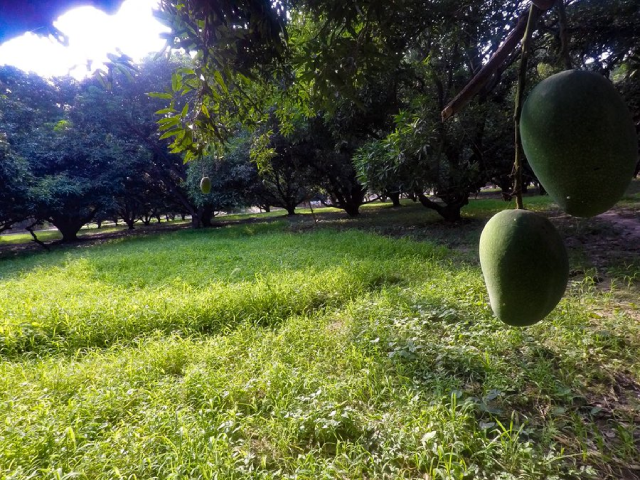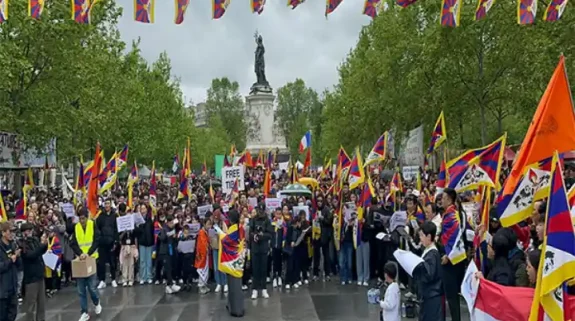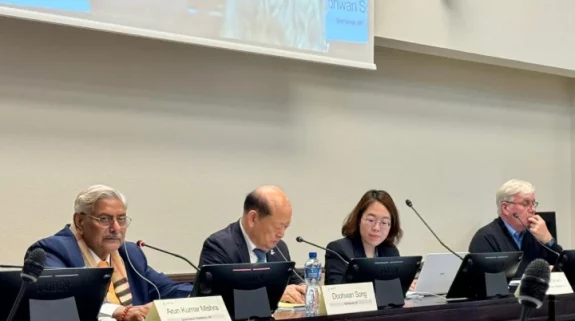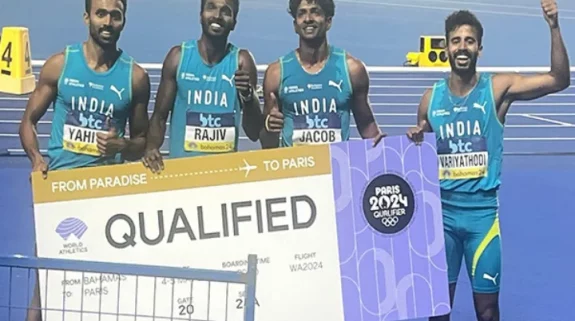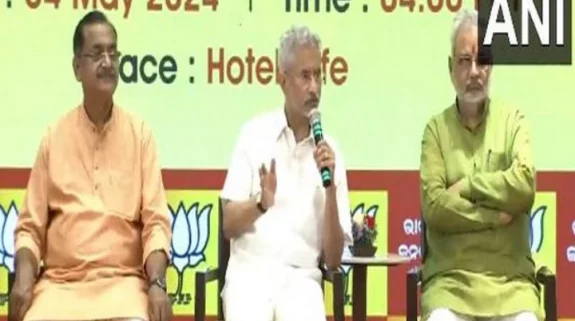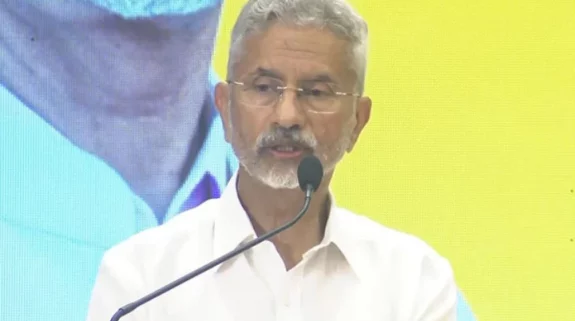In Edinburgh, where, this summer, more Indian travellers are visible than ever before, one attraction — apart from all the writerly and theatrical traditions of the city as also the magnificent Victoria Street that inspired JK Rowling ostensibly – is shopping for tweed and cashmere, part of Scottish textile heritage.
Victoria Street, Edinburgh pic.twitter.com/QgJxoTCbsQ
— The Mozinity (@mozinity) December 23, 2022
Indeed, the luxury woollens are part of this region’s rich history. But it is history that has links with that of the Indian subcontinent’s; and with a fruit that is not just India’s most loved but has a far deeper cultural resonance across art, architecture, rituals, and myths that span millennia.
We are of course talking about the mango, that first finds mention as amra in the Brhadarnayaka Upanishad, is regarded as sacred to the Buddha who rested in a mango orchard, whose leaves are used in ritualistic worship and adorn doorways as auspicious torans, that finds a mention as manga or man-kai in Tamil literature from which the English word mango is derived, and whose taste and virtues have been extolled by almost every foreign traveller to India throughout its history.
In India, the mango season is about to end. But in Edinburgh, where it is still summer despite the rain, mango motifs are all around us as we stroll the length of the posh Princess Street. There are no mangoes to taste this far north, but the ambi motif, a symbol of prosperity, fertility and luxury in India’s layered cultural life is still to be spotted as the paisley on Scottish woollen weaves.
How the mango arrived in Edinburgh, Glasgow and to Scotland’s smaller towns not as a fruit but as an idea and a motif inextricably associated with luxury is an interesting story. By the early 18th century, colonialism had started gaining ground in India, as the English East India Company began controlling much of the subcontinent politically and economically. Cashmere shawls, thus called after the region of “Kashmir,” where the Mughals had patronised a rich craft of weaving that used pashmina or fine cashmere wool of the local mountain goats, started being exported to England and other parts of Europe by the East India Company as a luxury product. Soon, these became the most coveted items of fashion for women belonging to the upper classes.
The designs and colours of the Indian Kashmiri weaves were complex and detailed. And one of the most pervasive motifs was the ambi. The Kashmiri craft had developed as inspired by the Persian tradition of silken luxurious weaves, where the main “bootah” or motif was the cypress tree. In the hands of Indian weavers however the cypress motif changed. Inspiration was at hand in the form of the mango or ambi or “kairi” as the Indo-Islamic world called it; the shape of a young mango, regarded as auspicious all over India, and part of many myths, poetry, songs, art, and architecture.
Kalidasa, the classical playwright, had used mango blossoms as a literary device to evoke romanticism and love. The mythic Kamadeva, the Indian eros, supposedly wielded arrows made of mango leaves, and the Mughals had extolled its virtues, most notably Jahangir in Tuzak- e- Jahangiri, his autobiography, where the emperor makes a telling remark while visiting Kabul : Surrounded by juicy peaches, “Mirzai” apricots, “shah” alu or the “royal” cherries so dubbed by Akbar, Babur’s favourite melons and more, Jahangir writes: “The excellence of the fruits of Kabul notwithstanding, not one is as delicious as the mango in my opinion”.
Magnifera Indica, indigenous to north eastern India, had been domesticated by then for thousands of years, and its use both as a fruit and a metaphor was all pervasive in India
The “carrie” (Kairi) shawls being brought into Europe by the early colonials were however expensive and laborious to produce. Each took months to make, and demand outstripped supply. This was the beginning of the industrial age in Europe. Mechanised mills had started flourishing, and efforts were made to make cashmere in Scotland using imported wool. Paisley, a town in the lowlands near Glasgow became the epicentre of this production of Kashmiri replicas, and soon the difficult to pronounce carrie was abandoned in favour of paisley, now both a fashionable design motif and town in Scotland.
John Lavery’s ‘Played!’ (1885) depicts the newly fashionable game of lawn tennis as practiced by the wealthy middle class members of the Paisley wool manufacturing elite in Scotland. The scene takes place at Cartbank, Cathcart near Paisley, where a court had been established. pic.twitter.com/JO7n3FZ0zu
— Richard Morris: art history in a Tweet (@ahistoryinart) June 9, 2023
The paisley was to dominate the world of fashion right till the 20th century, when in the 1960s and 70s, the motif was found on hippie shirts and corporate ties alike as well as on the clothes the Beatles wore. And now, circa 2023, as Indians arrive in droves this year in Scotland, buying the local cashmere (now produced from indigenous wool) the paisley aka mango story has come a full circle though few realise the fruity significance.
Meanwhile, mango the fruit, has not really made an appearance on Scottish tables except by way of sweet Anglo-Indian chutneys sometimes to be found lining sandwiches a conserve with colonial precedents too. In London though, imported alphonso can be tasted at the many luxury Indian restaurants right at the beginning of its season. But can India’s mangoes find more of a market in the UK as also the rest of the western world, where their globalised image is so entrenched in fashion iconography?
India is mango’s largest producer but only its 10th largest exporter in a market dominated by south American varieties. This year though the price gap between the pricier and some would contend more delicious Indian mangoes and others has reduced because of normalised air freights that had risen sharply in the pandemic years. Exports to the US and the UK have been higher than in the last two years, but remain dominated by the alphonso, as also upcoming varieties such as the Gir-kesar, thus dubbed by the Nawab of Junagadh ostensibly.
Yet there are hundreds of other varieties that could rule tastes all over the world. From the langra of Benares, first grown by a lame Sufi during Aurangzeb’s reign, with its subtle tartness, to the sophisticated Nawabi Dussehri from Malihabad, Bengal’s Himsagar, even the hybrid mallika (a cross between Tamil Nadu’s Neelam and the Dussehri) known for its exquisite sweetness, not to mention rare varieties like the Azam us Samar (distinctive for its big size, two to three times a regular mango, aroma and sweetness) whose grafting may still be found in the Nizam’s garden in Hyderabad (the Nizam used to send this fruit every year to Queen Elizabeth II, as someone in the mango trade once told me).
India seeks new markets for mango exports https://t.co/EEOhFWBV5m pic.twitter.com/iGTDd1u351
— Fresh Produce India (@freshprodINDIA) July 23, 2021
In a world where Chilean blueberries and Washington apples are increasingly finding new markets, can Indian mangoes, with their deep cultural resonance and globalised iconography not find more tables appreciative of their diversity and nuance?
(Anoothi Vishal is the author of Mrs LC’s Table. She is also a columnist and food writer, specialising in cuisine history, culinary links between communities and regions. Views expressed are personal and exclusive to India Narrative)






